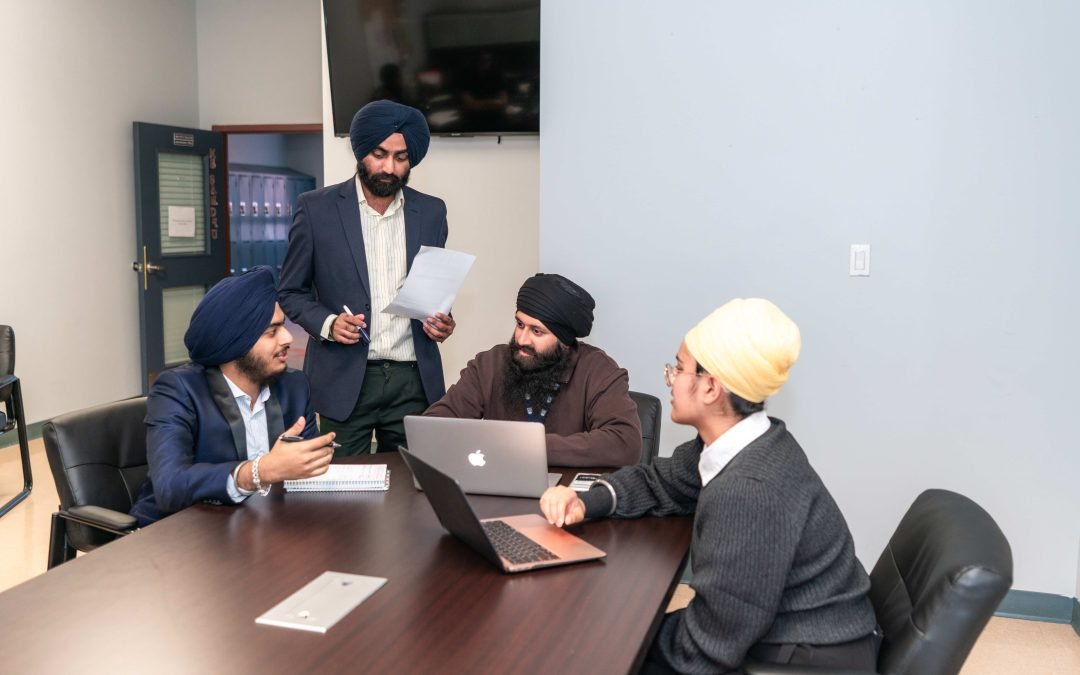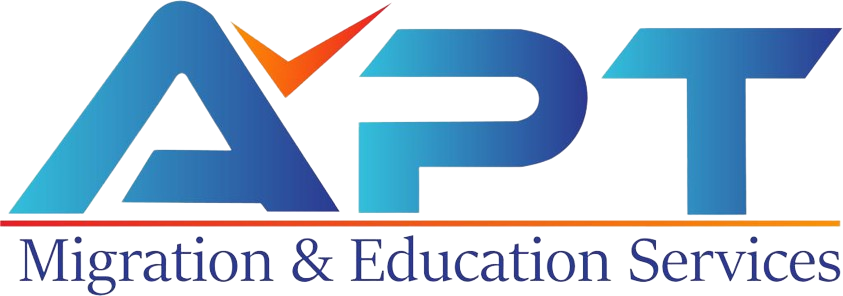
by Buraq Freelancers | Jan 29, 2024 | Information
One important part of Australia’s skilled migration program is the Subclass 189 visa, generally known as the Skilled Independent visa. Its goal is to draw in highly qualified individuals from across the globe who can address certain skill shortages and advance the nation’s economic development. The Subclass 189 visa is a points-tested visa that enables people to live and work independently in Australia without the need for employer or family sponsorship.
Applicants must first submit an Expression of Interest (EOI) via the SkillSelect online system in order to be eligible for the Skilled Independent visa. The applicant’s credentials, employment history, and other pertinent information are described in this EOI. Points are awarded according to a number of criteria, including age, work experience, educational background, and English language ability. Then, invitations to apply for a visa are extended to the top-ranked applicants.
One of the main components of the point-based system is language proficiency. To prove their English proficiency, applicants must receive a minimum score on an accredited English language test, like the Pearson Test of English (PTE) or the International English Language Testing System (IELTS). An applicant’s total point total is greatly influenced by their proficiency in the English language.
The scoring system also takes into account a large amount of educational background. Points are given according to completed education level and its applicability to the selected profession. A PhD or master’s degree, for example, is worth more points since it demonstrates the significance that higher education places on advanced knowledge and abilities.
Another element taken into account by the scoring system is age. A sliding scale is used to assign points, with younger applicants scoring higher. This is in line with the Australian government’s aim to draw in competent workers who can make a sustained contribution to the workforce.
Candidates may also receive points for completing a professional year, having skilled work experience, and achieving a variety of other goals. The purpose of the points system is to identify people who can immediately and favorably impact the economy and have a high chance of settling in Australia.
Applications for visas must be submitted within 60 days of receiving an invitation. Recipients are given a permanent visa, which enables them to remain in Australia permanently and work there. In addition, if you fulfill the requirements, you can seek for Australian citizenship and receive social security benefits and healthcare access through this visa.
For skilled individuals who want to establish a life in Australia without the necessity for employer sponsorship, the Skilled Independent visa is a crucial route. This is consistent with the nation’s objective of drawing in and keeping skilled workers in order to fill skill gaps and advance the country’s economy. Points-tested immigration permits the most qualified individuals to settle in Australia by guaranteeing an equitable and open selection procedure.

by Buraq Freelancers | Jan 29, 2024 | Information
The purpose of Australia’s self-employment visa, formerly known as the Business Innovation and Investment (Subclass 188) visa, is to draw in and make it easier for people who want to invest or start a business there. By attracting qualified investors and entrepreneurs, this visa category supports economic growth and innovation as part of the larger Business Innovation and Investment Program.
In order to qualify for the self-employment visa, candidates must first submit an Expression of Interest (EOI) using the online SkillSelect platform in order to be invited to apply. Successful professional experience, a sincere desire to run and manage a business in Australia, and a readiness to devote a significant amount of money to the nation are requirements for this subclass of visas.
A successful history of business ownership or investing is one of the essential conditions. Giving proof of running a successful company or demonstrating a track record of wise investments could be examples of this. The search for candidates who can assist in improving the nation’s economy and creating jobs is conducted by the Australian government.
This visa category has certain financial restrictions. A significant investment in an Australian company must be possible for applicants. Depending on the particular visa stream, such as the Investor or Business Innovation streams, there are different minimum investment requirements. As a means of guaranteeing that people can sustain themselves and make a substantial contribution to the Australian economy, this financial promise is made.
Additionally, candidates must have a family who is an Australian citizen, permanent resident, or eligible citizen of New Zealand nominate them or sponsor them. These requirements are met by state or territory government agencies. This nomination or sponsorship is an affirmation of the applicant’s ability to further the local economy in that particular area.
In addition, candidates need to have their candidacy approved by a state or territory government agency or have sponsorship from a qualifying relative who is a citizen of Australia, a permanent resident of Australia, or a citizen of New Zealand. The nomination or sponsorship functions as a testament to the applicant’s capacity to foster economic growth in a particular Australian region.
Another factor to consider is language proficiency. Although there isn’t a statutory English language requirement for this visa, having a strong command of the language helps applicants better integrate into Australian society and industry. Although a reasonable command of the English language is desirable, it is not a formal requirement for the self-employment visa. English proficiency improves a candidate’s capacity to interact with the community, communicate clearly, and fit in at work in Australia. It is important tools that can help the holder of the visa complete their commercial efforts in Australia with greater success.
The Business Innovation and Investment visa is a transitory document that is normally good for four years after it is obtained. It is required of visa holders to actively manage their business or investment in Australia throughout this time. After fulfilling certain conditions, such as continuing their business operations and fulfilling the financial requirements, successful visa holders may be qualified to apply for permanent residency through the Business Innovation and Investment (Subclass 888) visa.
To sum up, the Australian self-employment visa is a chance for investors and business owners to support the country’s economic expansion. Individuals can obtain temporary residency and prepare the path for permanent residency by showcasing a successful company record, making a sizeable financial investment, and actively engaging in the Australian business scene. This visa track is consistent with Australia’s objective of using skilled migration to promote innovation, job growth, and economic development.

by Buraq Freelancers | Jan 29, 2024 | Information
A demonstration of the country’s dedication to offering safety and refuge to those in need, the Australian Humanitarian Visa program upholds the values of empathy, compassion, and human rights. This program is essential to Australia’s international humanitarian efforts and covers a range of visa subclasses, each of which addresses distinct humanitarian issues and circumstances.
The Refugee and Humanitarian (Subclass 200-299) visa is one of the main humanitarian visas, intended for people who are being persecuted in their own countries. Those who are recommended by an Australian citizen, permanent resident, or eligible New Zealand citizen, or who have been referred to Australia by the United Nations High Commissioner for Refugees (UNHCR), are eligible for this type of visa. For those who are in dire need of a safe haven who have fled conflict, violence, or persecution, it acts as a lifeline.
The Subclass 202 visa is part of the Special Humanitarian Program (SHP), which is a major aspect of the Australian Humanitarian Visa program. This category is intended for people who, despite not being eligible for a refugee or humanitarian visa, nevertheless experience severe discrimination or violations of their human rights back home. Australia’s commitment to resolving a wide range of humanitarian issues and offering protection to people who face grave dangers to their safety and well-being is reflected in the SHP.
To determine their eligibility, applicants for humanitarian visas must go through a demanding evaluation procedure. Extensive background checks, interviews, and claim verification are all part of this process to make sure the people who are granted visas indeed need humanitarian protection. The Department of Home Affairs conducts the assessment, and decisions are made in accordance with Australia’s international commitments and humanitarian values.
The humanitarian visa program offered by Australia is consistent with the nation’s adherence to the values set forth in international agreements, including the 1951 Refugee Convention and its 1967 Protocol. Australia supports international efforts to safeguard the rights and dignity of vulnerable populations by offering sanctuary to people escaping persecution, violence, or other forms of damage.
The Humanitarian program also includes the Subclass 785 Temporary Protection visa and the Subclass 790 Safe Haven Enterprise visa. When someone enters Australia without a valid visa and is discovered to be in violation of Australia’s protection responsibilities, they are awarded one of these visas.
Whereas the Safe Haven Enterprise visa enables people to work and study in regional areas, promoting their integration into Australian society, the Temporary Protection visa grants a temporary stay to those who do not fit the requirements for a permanent visa.
It is crucial to remember that Australia’s Humanitarian program highlights its dedication to helping those who have experienced severe discrimination or violations of their human rights, in addition to refugees. The Australian government acknowledges the complexity of global displacement and works to address different forms of persecution and vulnerability by providing a wide range of humanitarian visas.
Upon being awarded a humanitarian visa, persons are eligible to receive various assistance services that are designed to ease their transition into Australian society. Language courses, cultural orientation initiatives, and help locating housing and a job are a few examples of these services. The intention is to enable those in possession of humanitarian visas to start over and make a positive impact on the Australian society.
Additionally, the government’s commitment to managing the intake of humanitarian immigrants in a sustainable manner is demonstrated by the Humanitarian program’s annual quota. This guarantees that Australia can offer humanitarian visa holders sufficient resources and assistance, facilitating their successful integration and settlement.
To sum up, the Australian Humanitarian Visa program represents a ray of hope for those who are victims of violence, persecution, and violations of their human rights. Australia demonstrates its commitment to maintaining international responsibilities and providing protection to individuals in need by providing a range of visa categories that address distinct humanitarian issues.
The program not only embodies the nation’s principles of empathy and compassion, but it also makes a global contribution to addressing the issues that vulnerable populations face globally.

by Buraq Freelancers | Jan 29, 2024 | Information
The Subclass 494 Skilled Employer Sponsored Visa allows regional employers to address labor shortages in their region by sponsoring skilled workers when they cannot find a qualified Australian worker. A regional employer must sponsor the visa and the position must be expected to last for 5 years.
There is a maximum age limit of 45 years (with some exceptions), and applicants must have competent English, RCB (Regional Certifying Body) advice, and meet the AMSR (Annual Market Salary Rate) requirements. Visa applicants need to have a suitable skills assessment and at least 3 years of skilled employment. All areas other than Sydney, Melbourne, and Brisbane are referenced to as regionals.
Subclass 494 is split into three categories: Employer Sponsored Stream, Subsequent Entrant, and Labour Agreement Stream. The subsequent entrant visa is for those who want to join a family member who holds a subclass 494. A labour agreement stream visa is for applicants nominated by employers with a labour agreement with the Australian government. With a subclass 494 visa, the applicant can stay in the country for 5 years, but only in designated areas. To apply for permanent residency, the person must first meet the eligibility requirements. Once eligible, the candidate can apply for permanent residency 3 years after being granted the visa.
Benefits of this Visa:
A person can apply for permanent residency without going through a second nomination stage if the requirements are met. This can be done through the subclass 191 visa. Employers will have lower costs as they only need to pay one SAF (Sustainable Aviation Fuel) levy stage for the subclass 494 nomination.
During this time, the candidate can both work and study in Australia without encountering any difficulties. With the exception of certain locations such as Melbourne, Sydney, and Brisbane, the candidate has permission to study anywhere in the country. A candidate is permitted to travel in and out of the country as many times as they desire while holding a 494 visa.
Visa Cost:
The Department of Home Affairs (DoHA) fee for the main applicant is $4,640, for the spouse it is $2,320, and for children under 18 it is $1,160. A second Visa Application Charge (VAC) of $4,890 applies if the adult applicant does not meet the Functional English requirement.
Visa Processing Time
It takes 3 months to process 75% of applications and 4 months to process 90% of applications. Individual processing time may differ depending on the particular circumstances of the applicant and sponsor, as well as the quality of the application submitted to the Department of Home Affairs. Numerous well-prepared applications are processed more quickly and seamlessly than the average.
Eligibility Criteria:
Individuals holding the new provisional visas will also be unable to apply for most other visas based on skills in Australia, unless they have spent a minimum of three years in a specified regional area, unless there are exceptional circumstances. Moreover, similar to the current arrangements for the subclass 457 and 482 visa program, sponsor non-compliance can have a negative impact on holders of the new provisional visas. Other eligibility factors include;
- Applicants must be under the age of 45 when applying, with some exemptions possible.
- They should have a good level of English at the time of application.
- They must have worked in the nominated occupation for at least 3 years on a full-time basis, at the required skill level.
- Ideally, this experience should have been gained within the past 5 years, it is ok if it is not continuous .
- Part-time work may be considered as equivalent.
- The Department of Home Affairs (DHA) does not consider casual work for this visa.
- The Genuine Temporary Entrant (GTE) requirement does not apply.
- If the applicant is in Australia, they must hold a substantive or Bridging Visa.
- A successful skills assessment is required at the time of application. There is no requirement for doctor registration.
- For the 494 visa, the employer and job offer must meet certain requirements. The employer must be located in designated regional Australia.
- The position must be on the list of eligible occupations and be full-time, with a likelihood of being available for 5 years.
- The employer will need approval from the Regional Certifying Body (RCB), and must pay the Australian Market Salary Rate (AMSR).
How to apply?
With the exception of those who are in the process of immigrating and are not eligible to apply for or be granted this visa, candidates may be located inside or outside of Australia. A few things to consider when applying for a 494 visa are as follows:
- A legitimate passport that satisfies the conditions of the applicable visa category, a Subclass 010 Bridging.
- A valid visa that fulfils the requirements of the applicable visa category, a Subclass 020 Bridging B visa that satisfies those requirements, or a Subclass 030 Bridging C visa that satisfies those requirements.
- Furthermore, the applicant’s visa cannot contain any terms that would prohibit them from submitting an application for this visa within Australia.

by Buraq Freelancers | Jan 23, 2024 | Information
The information supplied here may have changed before the deadline in January 2022, so it’s important to confirm the most recent criteria with official sources.
The Australian government’s visa policies must be followed when traveling from the UK to Australia. In general, UK nationals need a visa to enter Australia, although the kind of visa needed varies depending on the reason and length of the trip.
UK nationals may apply for a Visitor visa (subclass 600) or an Electronic Travel Authorization (ETA) for brief travels, such as those for business or tourism. While the Visitor visa permits stays of up to 12 months, the ETA is only appropriate for visits lasting up to three months.
You must apply for a specific visa that corresponds with your plans whether you intend to come for job, study, or to stay longer. For instance, people intending to work in Australia may apply for the Subclass 482 Temporary Skill Shortage visa, whilst those wishing to study there may apply for the Subclass 500 Student visa.
It’s crucial to remember that visa laws can change and that the prerequisites might change depending on your unique situation. For the most current and correct information, it is therefore advised to visit the Department of Home Affairs’ official website or get in touch with the Australian embassy or consulate that is closest to you.
It’s important to plan ahead for the visa application procedure while traveling from the UK to Australia. While the online application system makes the procedure easy and quick, there is always a chance of delays and certain visas may require longer processing periods.
Additionally, given the global nature of the COVID-19 epidemic, travelers should be aware of all health and safety legislation, including any requirements for quarantine or health examinations. Like many other nations, Australia has put policies in place to control immigration and safeguard public health.
Being aware of the necessary paperwork for your visa is only one part of being ready for your trip. It is advisable to acquaint oneself with the customs, regulations, and other pertinent details to guarantee a seamless and delightful stay in Australia.
In conclusion, depending on the reason for the visit and the length of stay, UK nationals usually require a visa in order to enter Australia. It’s critical to keep up with the most recent changes to visa regulations, to apply ahead of time, and to take into account any extra safety and health precautions. A smooth and pleasurable journey from the UK to Australia can be achieved by preparing ahead of time and keeping abreast of official regulations.




